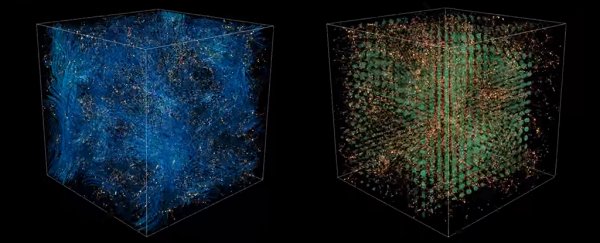Physicists in Switzerland are using new code called 'gevolution' together with Einstein's theory of general relativity to map the expansion of the early Universe more accurately than ever before. The new model factors in the rotation of space-time and the amplitude of gravitational waves - the existence of which was confirmed just last month.
It's more accurate than previous software simulations, its developers say, because it takes into account the high-speed movements of particles and the fluctuations of dark energy. In line with Einstein's general relativity theory, the aim was to predict the amplitude and impact of gravitational waves, and the unique rotation of space-time to map the growth of the Universe.
To achieve their target, the University of Geneva team analysed a cubic portion in space, consisting of 60 billion zones, each containing a particle (a portion of a galaxy). This enabled them to study the way these particles moved in relation to their close neighbours.
By plugging in data from Einstein's equations, and using the UNIGE LATfield2 library and a Swiss supercomputer, the model could measure the metric of distances and time between two galaxies in the Universe.
Previously, scientists have studied the formation of large-scale cosmological structures using the gravitational law set down by Isaac Newton: that the attraction between two bodies is directly related to their mass and the distance between them.
While Einstein's general relativity theory has since superseded it, linking gravity with acceleration and providing a more accurate method of tracking a constantly changing Universe, the ideas set down by Newton are still extensively used to model the effects of gravity and large masses.
And that brings us back to the gevolution model, which is able to map the latest theories in scientific thinking and celestial movements against Newtonian codes.
What comes out the other end is a mathematical model that provides a more accurate and more complex look at how the Universe expanded at the beginning of its history – it should also help us understand more about gravitational waves and dark energy (thought to be responsible for up to 70 percent of the Universe).
"This conceptually clean approach is very general and can be applied to various settings where the Newtonian approximation fails or becomes inaccurate, ranging from simulations of models with dynamical dark energy or warm/hot dark matter to core collapse supernova explosions," explains the new paper, published in the journal Nature Physics.
The new code is also going to make it possible for the theory of general relativity to be tested on a larger scale than ever before, and to help foster further research, the team plans to make the gevolution code open to the public in the near future.
